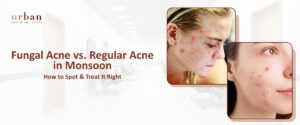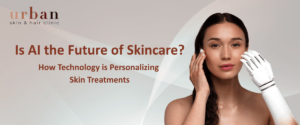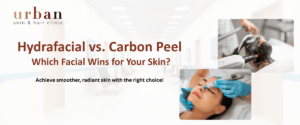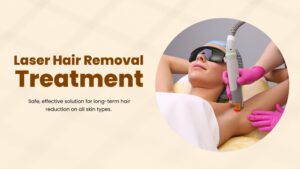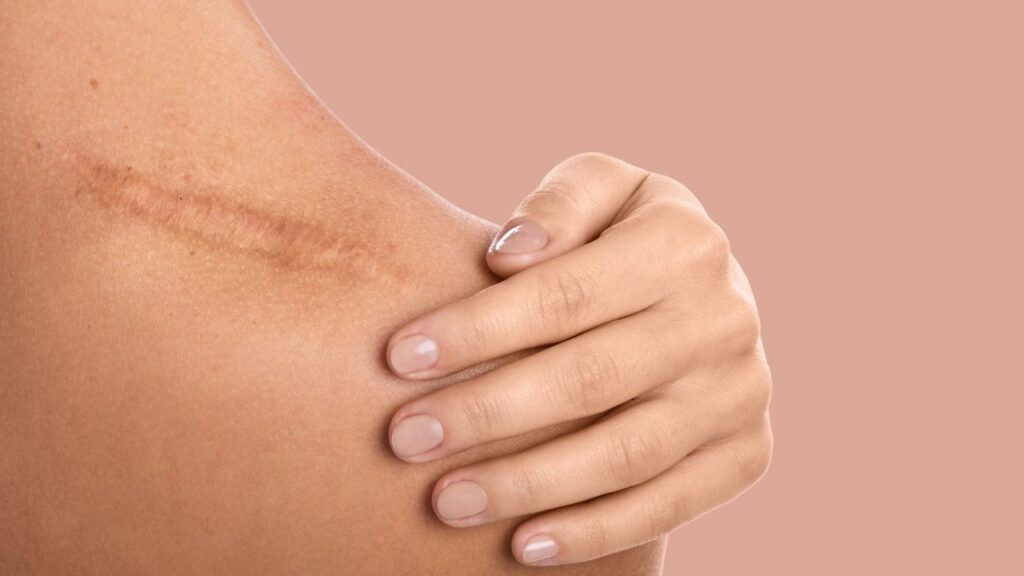How to Reduce Melanin in the Skin?

Table of Contents
Are you facing pigmentation issues? and even after trying various medicines and DIY home remedies, nothing has given you any satisfactory results. In this blog, you will get an insight into why you are getting this issue and what are treatment options available. Keep reading to know more.
Melanin is a substance found in the skin responsible for pigment production. Each individual’s skin will contain a different quantity of melanin than another. Genetics and other factors are responsible for this difference.
Urban Skin & Hair Clinic is one of the leading Dermatologist in India we have Skin clinic in Pune & Skin treatment clinic in Mumbai. If you are suffering from Melanin skin problem feel free to contact us.
Call Our Specialist
What is Melanin?
Melanin is a chemical found in the skin responsible for the pigmentation of the skin. According to scientists, we may classify human melanin into three types:
- Eumelanin
- Pheomelanin
- Neuromelanin
Eumelanin and pheomelanin pigments are found in the epidermis, one of the skin’s layers. Neuromelanin is found in high concentrations in the brain.
Melanocytes are the cells responsible for the production of eumelanin and pheomelanin. Keratinocytes are the cells responsible for transporting melanin to the skin’s surface.
Melanocytes generate much more melanin in persons with dark skin tones than those with lighter skin tones.
What Happens with an Increase in Melanin?
Excess melanin has adverse consequences, including:
1. Vitamin D Deficiency
A high level of melanin might cause a vitamin D deficiency.
Sunlight initiates vitamin D production by converting its precursor into its active form. Those who have an excess of melanin are more prone to vitamin D insufficiency since the melanin acts as a shield, blocking sunlight from reaching their skin and causing them to become vitamin D deficient. Other medical disorders, such as osteoporosis and rickets, might result.
Vitamin D is important for the absorption of calcium and phosphorus in the body, and it is also beneficial for the maintenance of the bones and skeletal system. Monitoring your vitamin D levels is essential while going on a tanning binge in the sun.
2. Hyperpigmentation
Excessive exposure to the sun can increase your melanin levels, resulting in hyperpigmentation on the skin, manifesting as dark spots, melasma, and age spots on the skin.
Can you remove existing melanin deposits?
Many approaches may reduce current melanin deposits in the skin. It is recommended that you get medical advice before using any of these approaches. Laser treatment is a method of removing the top layers of skin by using a pulse of light. It has the effect of reducing melanin in the treated regions.
How to reduce melanin in the skin?
Many approaches may reduce current melanin deposits in the skin. Consult a dermatologist to know about these procedures. Some of them include:
1. Laser therapy
Laser treatment is a method of removing the top layers of skin by using a pulse of light. It has the effect of reducing melanin in the treated regions. In terms of laser treatments, there are a variety of options, including:
- Ablative lasers are used to remove the outer skin layers and are effective for severe discoloration.
- Non-ablative lasers: These lasers are less aggressive than ablative lasers. They stimulate collagen production, which enables the formation of new skin. Intense pulse light (IPL) is one such treatment, which uses pulses of light energy to target sunspots and heat and destroy the melanin in the skin, therefore removing the discolored patches. Other therapy options include chemical peels and laser treatments.
- Q-switched ruby laser (QSRL): This procedure involves heating and dissolving the skin with a light pulse.
Consult a dermatologist to determine whether you are a suitable candidate for the treatment.
2. Topical creams or ointments
In addition, topical lotions or ointments may lighten the skin. These products work by reducing the amount of melanin already present in the regions where they are applied.
Dermatologists may prescribe skin whitening products or purchase them over the counter (OTC). In most cases, a product will include one or more of the following ingredients:
- Hydroquinone
- Kojic acid
- Vitamin C
- Glycolic acid
- Azelaic acid
- Retinoid
Many of them inhibit the activity of tyrosinase, the primary enzyme required for melanin formation. It has the effect of slowing down melanin production, resulting in lighter skin.
Conclusion
Melanin is a chemical that melanocytes create on the skin’s surface, which results in the skin’s pigmentation. Each individual’s skin will have a different quantity of melanin than another. The quantity of melanin present in the skin is determined by the number of melanocytes present and the ratio of the different melanin present.
Some medical diseases and environmental variables may affect the quantity of melanin in the skin, either decreasing or increasing it. If you wish to reduce melanin or get a treatment to remove dark patches, consult our dermatologists to get advanced treatments.
In our clinic our expert doctors Dr. Kiran, Dr. Nitin & Dr. Nipun will help you to get rid of melanin skin problem with a world class service, We have our Dermatology clinic in Pune & Dermatology clinic in Mumbai. Feel free to contact us and we will help you to get rid of Melanin skin problem.
FAQs
What Causes Excessive Melanin Levels In Your Skin?
There are a variety of variables that contribute to the excessive synthesis of melanin pigmentation. Here are some of the reasons:
- Exposure to UV Rays: People exposed to the sun’s ultraviolet rays create an excess of melanin visible on their skin. It is because melanin formation occurs because of exposure to ultraviolet light.
- Genes: One of the most important factors contributing to increased melanin production in the body is a person’s genetic makeup. People belonging to various ethnic groups and civilizations are naturally predisposed to create varying types and ratios of melanin, depending on their genetic makeup.
- Size of the Melanocytes: Every individual’s melanocytes will have a distinct size depending on their genetic makeup. As a result, individuals with more melanocytes may have an overabundance of melanin in their bodies.
- Skin Disorders: There are just a few skin conditions associated with high melanin production. Albinism is one example of such a condition.
How Does Melanin Affect Skin Color?
People with darker skin tones will create a greater amount of eumelanin, whilst those with lighter skin tones will produce a greater quantity of pheomelanin. As a result, when an individual’s body generates less melanin, their skin tone will be lighter.



